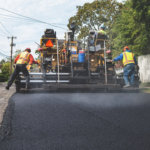
More amazing recognition has come our way. Round Rock ranks No. 2 on the just-released Money list of Best Places to Live.
“In Round Rock, Texas, the median household income is $82,229, over 60% of people own their homes, and jobs are abundant,” according to Money‘s analysis. “Over the past decade, the county has seen a 41% increase in job growth — and is still expanding. The area’s unemployment rate is 3.1%, and Round Rock is a hub for both large and small companies.”
Round Rock’s robust economy and excellent public school system were emphasized, along with a great support network for businesses large and small. The article also noted quality of life amenities like Old Settlers Park and the Dell Diamond.
“Being recognized on this prestigious list really confirms what we’ve known for years about the place we call home – this place rocks!” Mayor Craig Morgan said. “The City has worked hard on long-range planning, public safety and quality of life initiatives, all of which played a major role in achieving such a lofty ranking. I’m especially glad to see the well-deserved accolades for Round Rock ISD and our business community, led by the Round Rock Chamber. It’s truly a team effort to create such a dynamic community.”
Money looked only at places with populations of 50,000 or greater. They eliminated any place that had more than double the national crime risk, less than 85% of its state’s median household income, or a lack of ethnic diversity.
Rankings derived from more than 80 separate types of data, in the following categories:
- Economy — based on local unemployment rate, historical job growth, projected job growth and the level of employment opportunities available, among other factors.
- Cost of living — based on tax burden, insurance costs, commuting costs, medical spending and income adjusted for cost of living.
- Diversity — based on racial makeup, racial integration, and economic diversity within a place’s population.
- Education — based on math and reading test scores and local and county level high school graduation rates.
- Housing — based on measures indicating affordability, supply and distress, including median home sale price in 2018, properties sold in 2018, utility and home cost of living indexes, and the property foreclosure rate, among other factors.
- Health and Safety — based on the number of hospitals and clinics, the number of mental health providers, dentists, doctors and primary care physicians, property and violent crime risk and homicide and drug overdose rates.
- Amenities — based on the number of leisure activities in the town and surrounding area, including bars, restaurants, museums, sports complexes, and green spaces.
- Ease of living — based on commute times, weather, and other factors.
3. @FishersIN
2. @roundrock
1. @ClarksvilleGovt
See all 100 of MONEY’s 2019 Best Places to Live: https://t.co/6Tg9BlKmk7 🏡— Money (@MONEY) September 16, 2019







